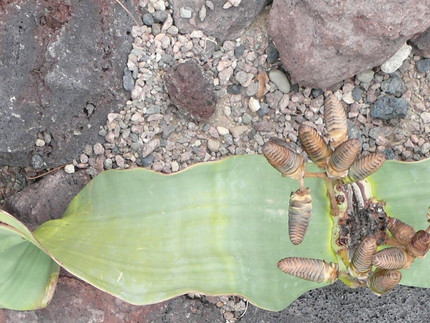Colonial botany and its impact
In contrast to modern times, the science of botany played an overriding role during colonial expansion. Raw plant materials were a valuable commodity. Colonial profits depended on the accurate study and identification of profitable plants and their growing conditions.1
Colonial botany refers to the study, naming, cultivation, and commercialization of plants in a colonial context. It emerged during colonization by European empires and considered nature primarily as a resource for exploitation.2 With the rise of global trade, botany continuously opened up more regions, hand in hand with the expansion of the colonies.2
Access to the knowledge associated with these resources also played an essential role. Indigenous or local knowledge and practices were simply appropriated and thus overwritten for commercial exploitation and knowledge production.2 The violation of existing traditions and the reduction to profit still lead to serious problems today.3
The Austrian physician and botanist Friedrich Welwitsch, who spent seven years of botanical research in the colony of Angola in Portuguese service, discovered this most unique plant in 1859 near Cabo Negro in Angola4,5. In a letter in August 1860 to the Royal Botanic Gardens Kew, London, he first reported undoubtedly one of the most sensational ‘discoveries’ of the 19th century. In 1862 he sent Joseph Dalton Hooker material for scientific description, recommending the name Tumboa based on a native name. However, to Hooker this seemed inappropriate for this extremely exceptional plant; he thought a name after the European ‘discoverer’ would be more appropriate. Welwitsch agreed to the tribute by letter6.
The first description in the 'Transactions of the Linnean Society' contains almost 50 pages of text as well as 14 plates of illustrations, two of which are in color.6 The size and layout of this publication already demonstrate the scientific rank of Welwitsch's find.
In Angola, this plant species is called n'tumbo, which means 'stump'. The Nama call it ǃkharos or khurub, the Damara nyanka. The Herero call them onyanga, which means 'desert onion'. The pith used to be eaten, raw or baked in hot ashes. In Afrikaans, it is called tweeblaarkanniedood, which means something like 'two-leaf-can't-die'.8
Welwitschias can probably live over 1,000 years, but have only two leaves that continue to grow at the base throughout their lives while dying back at the top. Overall, they barely reach 1.50 m in height. They are bare-seeded plants, so they belong to the broader family of conifers. They are living fossils; remains of similar plants have been preserved in sediments deposited over 100 million years ago in what is now Brazil.9
References
[1] Batsaki, Yota; Cahalan, Sarah Burke; Tchikine, Anatole (Hg.) (2016): The botany of empire in the long eighteenth century. Dumbarton Oaks Research Library and Collection. Washington, D.C.: Dumbarton Oaks Research Library and Collection (Dumbarton Oaks symposia and colloquia).
[2] Schiebinger, Londa; Swan, Claudia (Hg.) (2007): Colonial botany. Science, commerce, and politics in the early modern world. University of Pennsylvania Press. First paperback edition. Philadelphia: University of Pennsylvania Press.
[3] Gottschlich, Daniela; Hackfort, Sarah; Schmitt, Tobias; Winterfeld, Uta von (2022): Handbuch Politische Ökologie 110. DOI: 10.14361/9783839456279.
[4] Klemun, Marianne (1990): Friedrich Welwitsch (1806-1872). Carinthia II 180: 11-30.
[5] Klemun, Marianne (2022): Friedrich Welwitsch: Nachleben in öffentlichen Spuren, eine Erinnerungskultur zwischen Natur und Gesellschaft. Carinthia II 212: 33-52.
[6] Hooker, J.D. (1864): On Welwitschia, a new Genus of Gnetaceae. Transactions of the Linnean society 24: 1-48 + 14 Tafeln.
[7] Endersby, Jim (2008): Imperial Nature. Joseph Hooker and the practices of Victorian Science. University of Chicago Press.
[8] Welwitschie. Wikipedia. https://de.wikipedia.org/wiki/Welwitschie, zuletzt geprüft am 27.03.2023.
[9] Dilcher, David L. et al. (2005): Welwitschiaceae from the Lower Cretaceous of northeastern Brazil. American Journal of Botany 92(8): 1294-1310.


